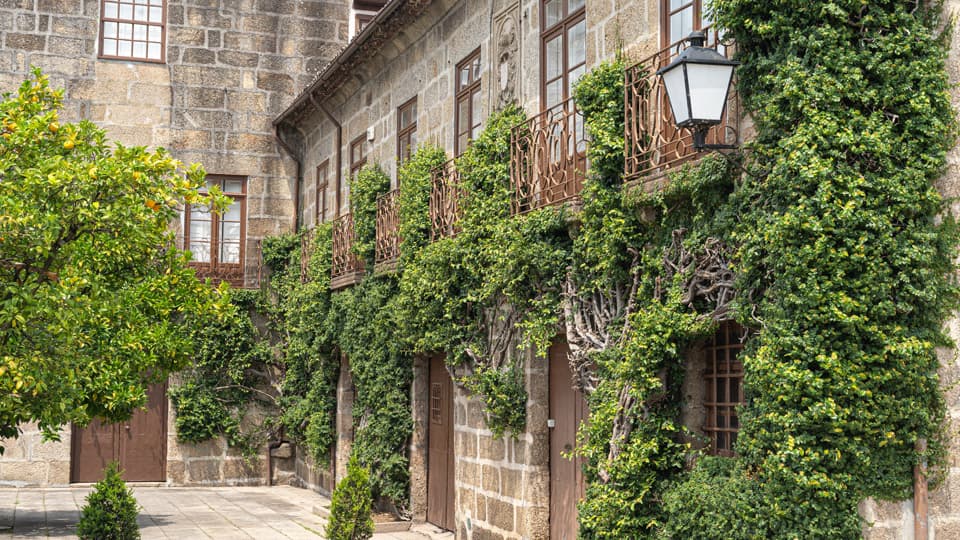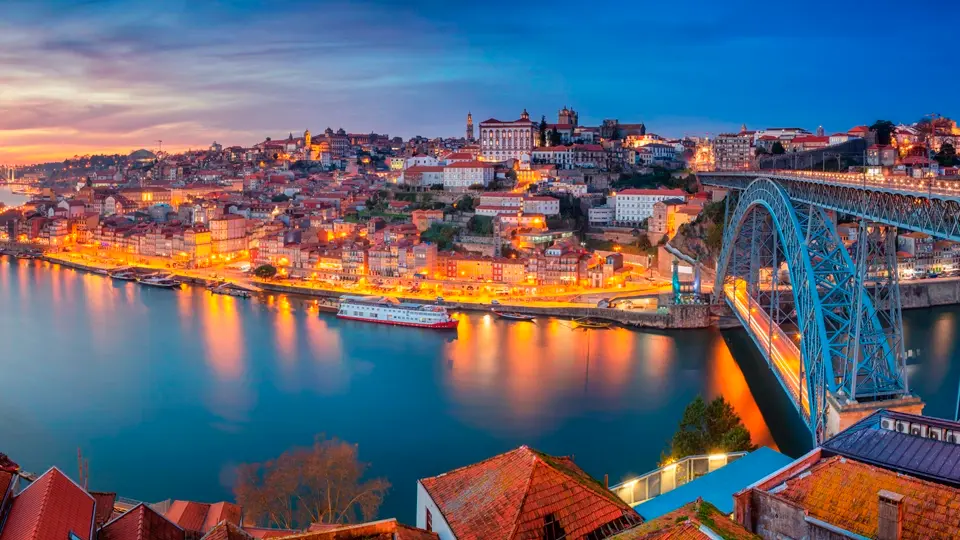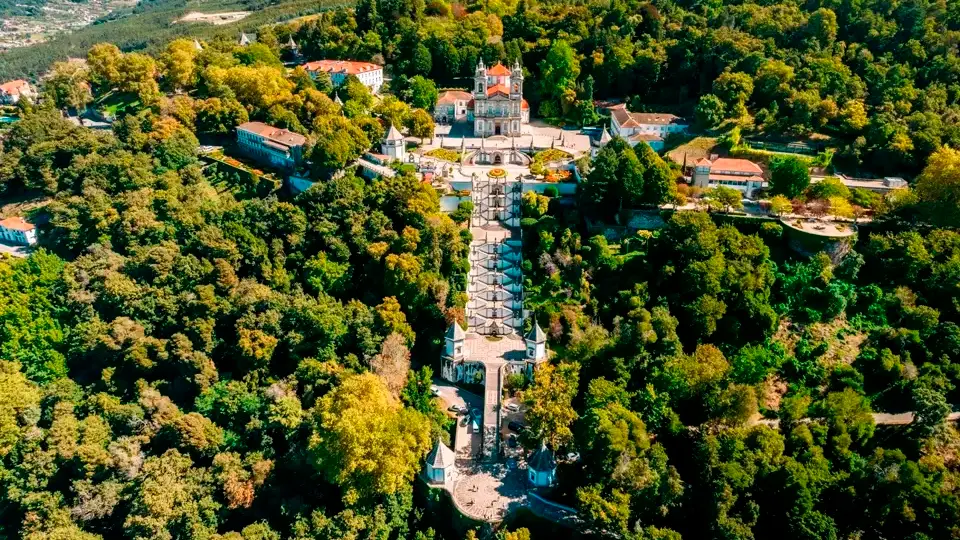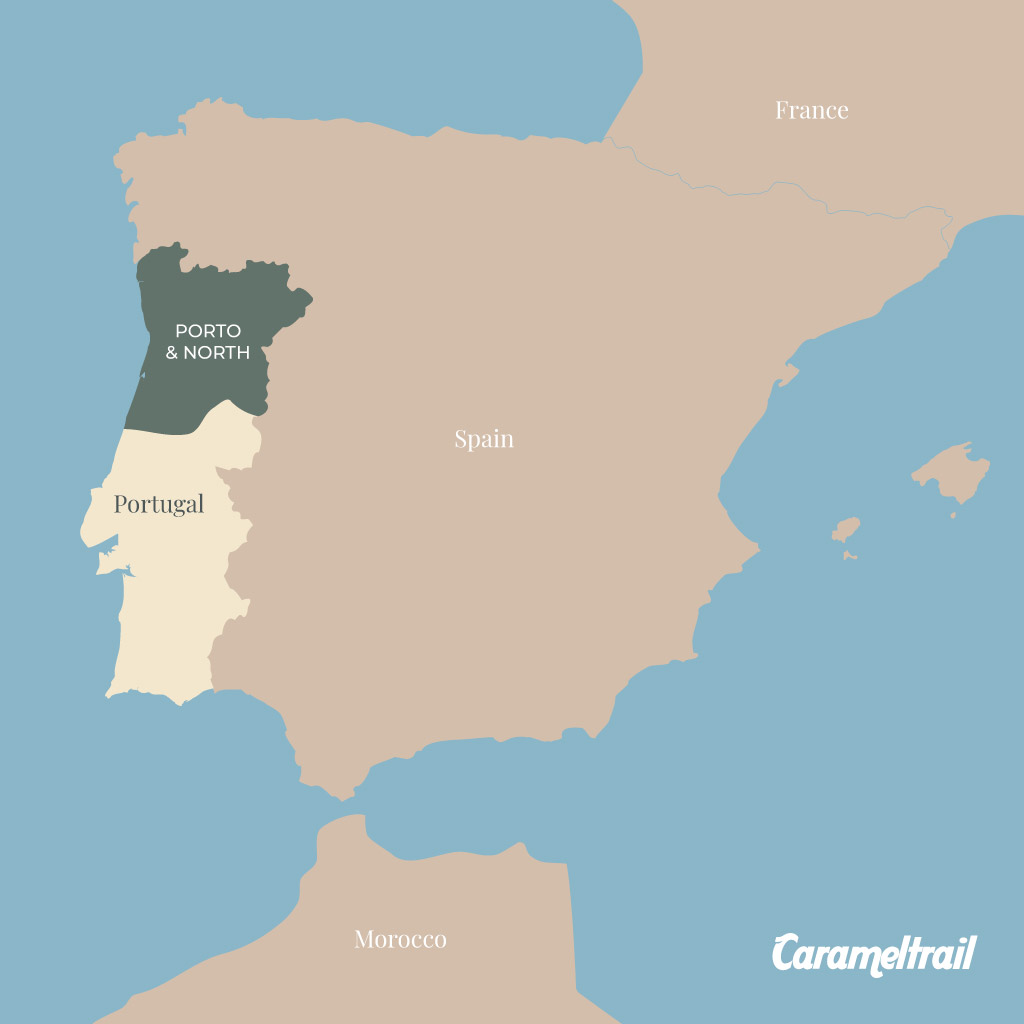
Guimaraes: Discover its important role in Portuguese history
Also known as the “birthplace of Portugal”, Guimarães is a city full of history and it will surely amaze you! Placed in Northern Portugal, it was here where some of the most important politic and military events took place in 1128, events that led to the independence and creation of a new nation.
Guimaraes has an amazing well-preserved medieval center that gives the town a timeless flavor. The city is a mix of quiet cobbled lands, some colorful facades, and well-preserved Baroque churches.
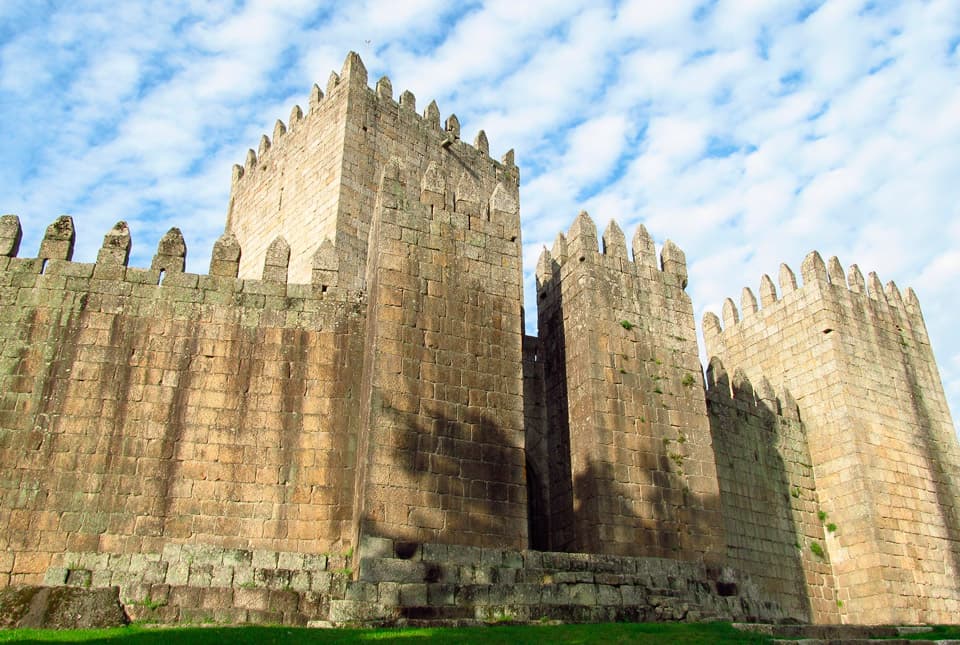
Photo: The castle of Guimarães.
NORTHERN PORTUGAL AND GUIMARAES
Although the northern part of Portugal is less explored, it is full of history and culture and it is considered the place where Portugal was founded as a country.
The North of this country is a combination of charming historic cities, some sleepy villages, and an extensive and wild coastline. At the same time, it is full of historical monuments, castles, religious complexes, and much, much more.
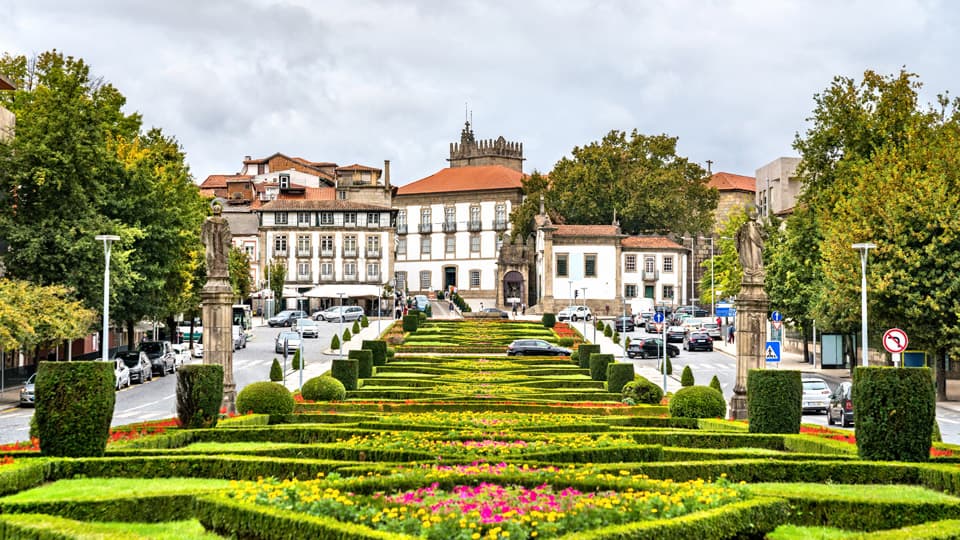
Photo: Garden square republic of Brazil. Guimaraes.
PORTUGUESE HISTORY: SOME FACTS RELATED TO GUIMARAES
“Aqui nasceu Portugal” (Here is where Portugal was born) is the inscription that lays on the medieval wall of this city. This inscription tells the importance of this city from the historical point of view since the Middle Ages in Portugal.
Guimarães is considered the place where this country was first known because the first King of Portugal, Afonso Henriques, came here and the first battle he had was fought close by. After Afonso and his allies won the battle, Guimarães became the capital of Portugal and the words mentioned above are engraved in one of the old towers of the city’s old wall.
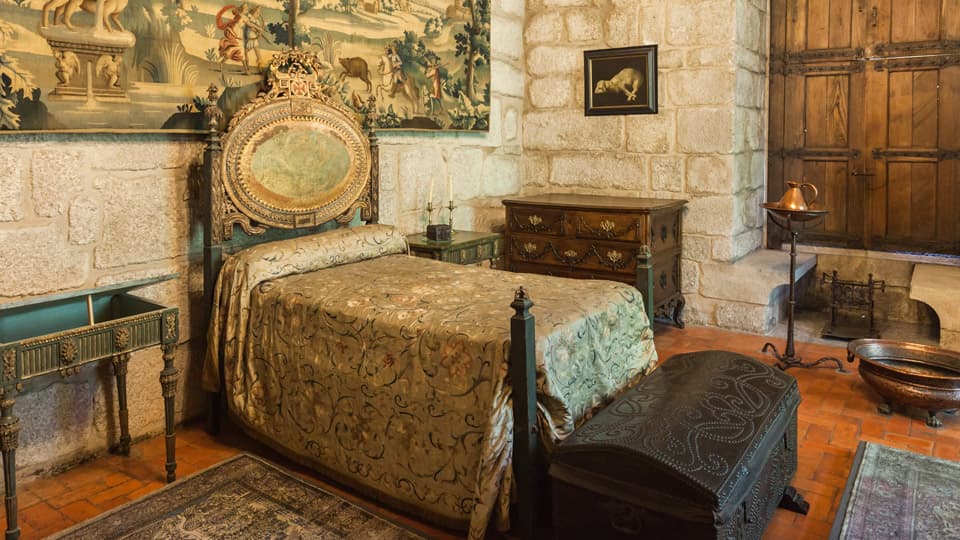
Photo: Palace of the Dukes of Braganza.
Portuguese king: let´s dive into the history
The first king that Portugal had, Afonso Henriques (who was son of the Duke of Burgundy) was born in Guimarães. This is why it is said that Portugal was born here and this is one of the reasons why this city is so famous. Afonso managed to set Portugal free from the Kingdom of León and Galicia because he won the Battle of São Mamede 1128. So, Dom Afonso became the king in 1139 and he decided that Guimarães to be the capital of his kingdom.
Strolling around the city today, you can’t help but immerse yourself in history. Starting with the ruins of a Celtiberian tribe, continuing with its well-kept medieval castle and adding its numerous churches, Guimarães has earned its World Heritage title.
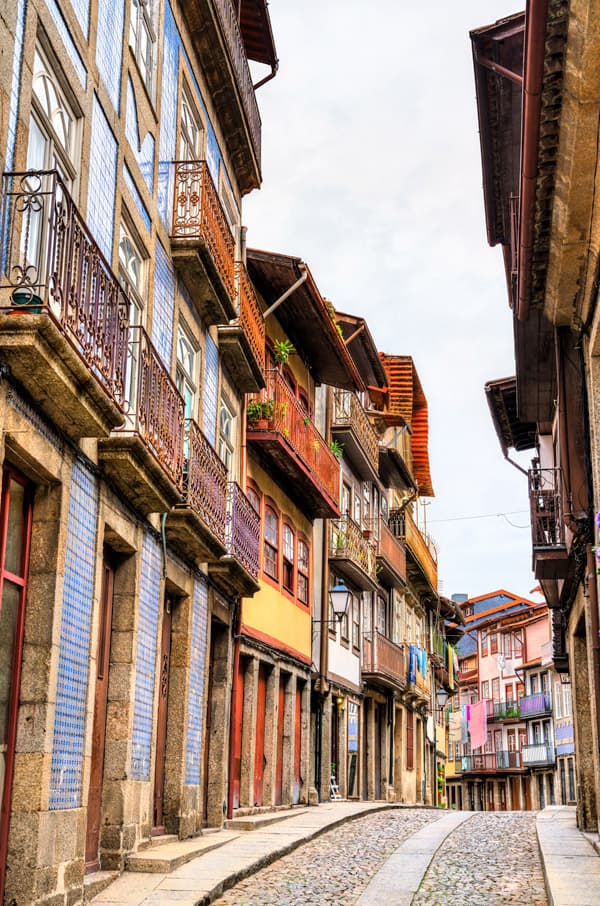
Photo: Traditional architecture of Guimarães.
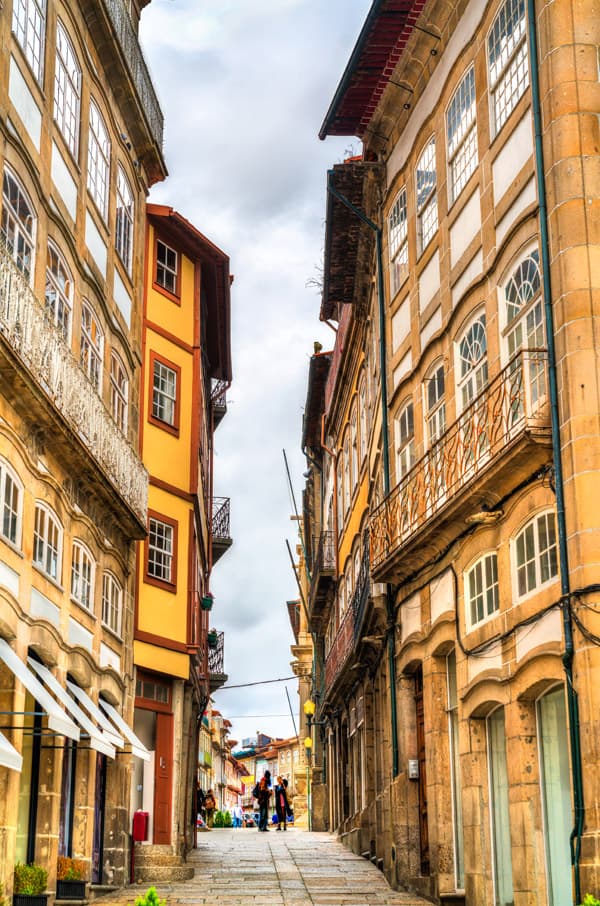
Photo: Traditional architecture of Guimarães.
VISIT GUIMARAES IN PORTUGAL
About an hour away from the second-largest Portuguese city, Porto, the city of Guimarães is easy to reach and a beautiful destination.
Guimarães is a well-known destination to spend a day trip or maybe a weekend break in Portugal, and its well preserved medieval historic center is a UNESCO World Heritage Site.
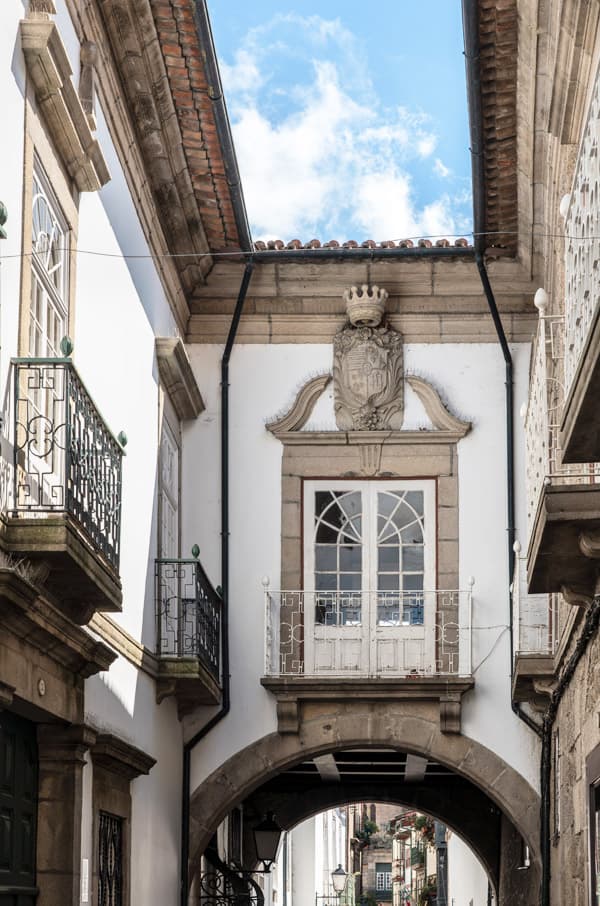
Photo: Traditional houses. Guimarães.
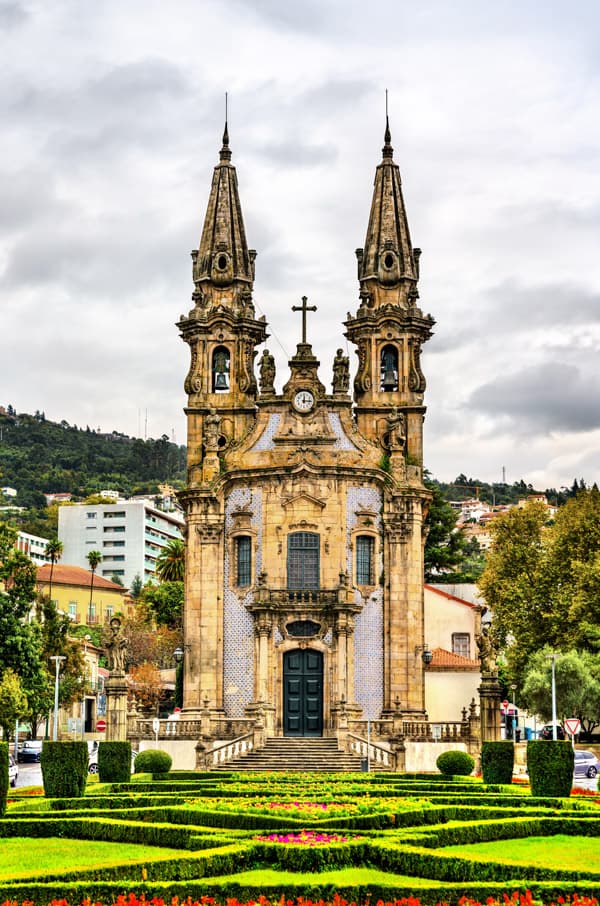
Photo: Igreja de Nossa Senhora da Consolação e Santos Passos, Guimarães.
The map of Guimaraes in Portugal
If you are curios to see the map of this city or to know where exactly it´s situated, take a look at this page here and delve into it. This way you will have a closer look at what to see in Guimaraes.
Largo da Oliveira or the Olive Square
Largo da Oliveira, also named the Olive Square, is a small stone-paved square in Guimaraes that seems took out from a medieval fairytale. In this square you can see many of the city’s most historic buildings and at the same time it has a young and exciting vibe floating in the air.
Its name is due to an ancient legend which says that a century-old olive tree once grew in the central square of Guimaraes right in front of the Church of Our Lady of Oliveira.
At first, the olive tree stopped bearing fruit and began to wither. But soon after that, a miracle happened. After a sacred cross was built in the square in 1342, the tree came to life, it turned green, and made new juicy fruit. That is when this square got its name “Largo da Oliveira.”
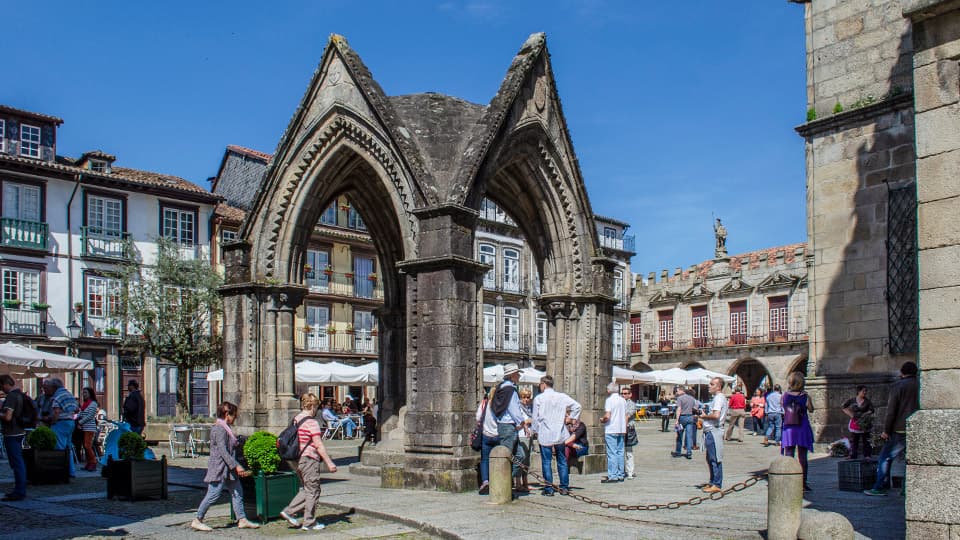
Photo: Olive Square. Guimaraes.
Olive Church from Guimarães
The Church of Our Lady of Oliva (Igreja de Nossa Senhora da Oliveira) is located in Piazza Oliveira and it is the only church in Portugal in which the ceiling in Gothic style is decorated with stunning paintings. The paintings on its ceiling also are a proof of a Byzantine influence.
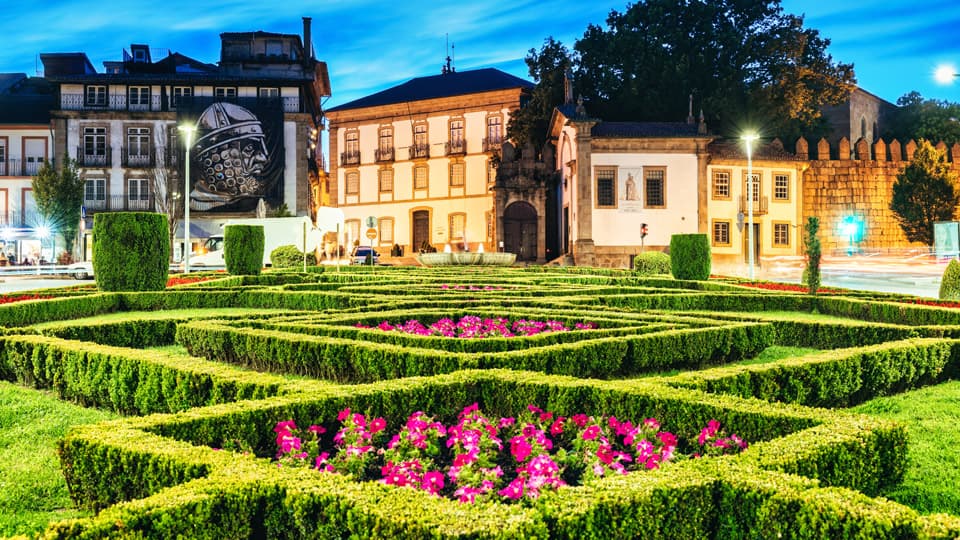
Photo: Garden old town. Guimaraes.
Padrão do Salado
This work is another interesting tourist attraction in Guimaraes. It seems that the monument is the work of a citizen and merchant, Pedro Esteves, who achieved it in Normandy. Padrão do Salado represents on one side the Crucifixion of Christ, and on the other the figure of the Virgin Mary.
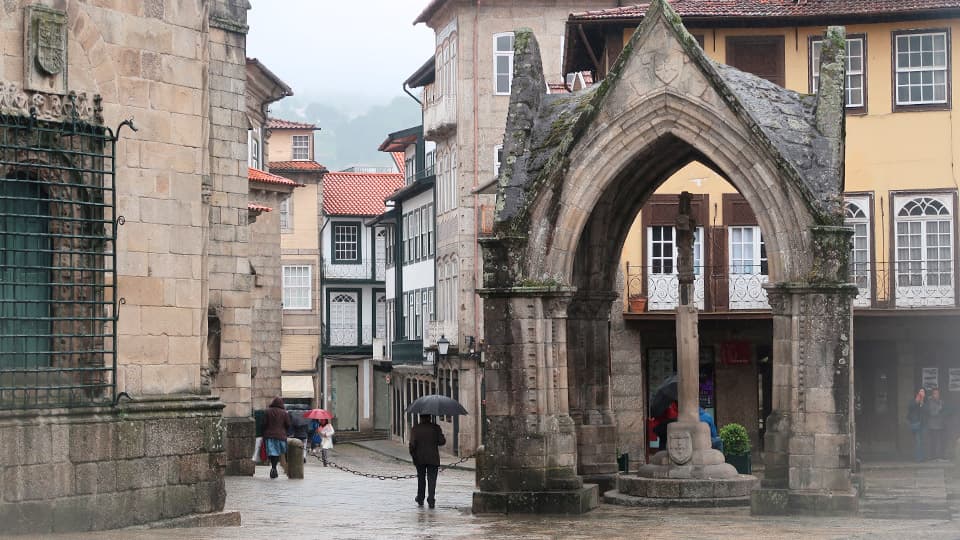
Photo: Padrão do Salado. Guimarães.
The castle of Guimarães
Guimarães Castle is the main medieval castle from Northern Portugal. This Romanesque castle was built in the 10th century in order to defend the Monastery of Santa Maria by the attacks of the Vikings, the Moors and the Norsemen.
The castle got restored in the 20th century and was classified as a Portuguese National Monument. When stepping in, you can see the great defensive structure.
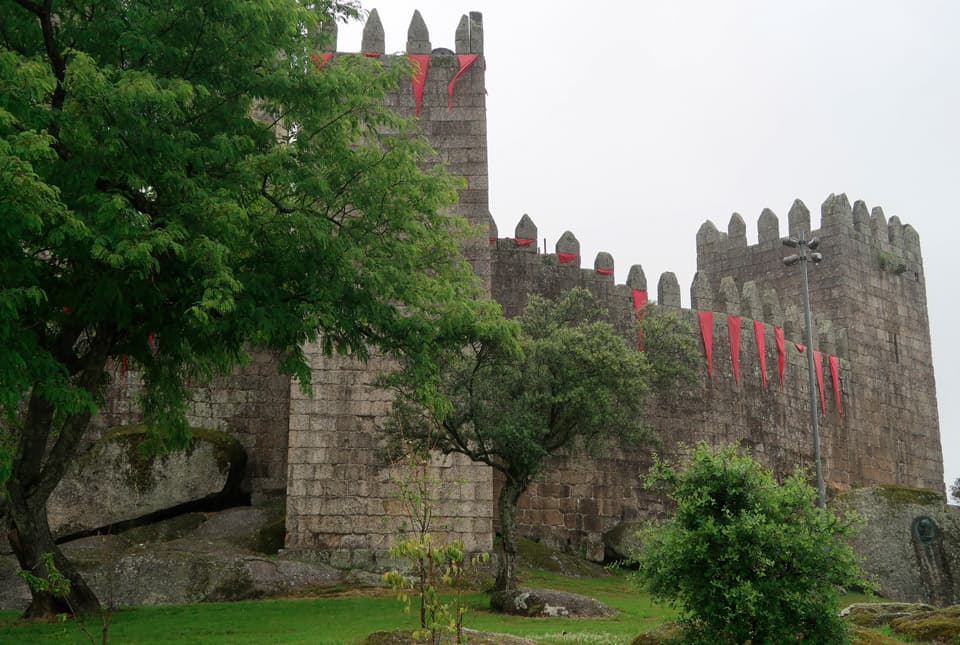
Photo: The castle of Guimarães.
Casa de Sezim: Guimaraes´ rustic charm
If you like ancient stuff, but at the same time you are keen to modern convenience, then the Portuguese Casa de Sezim is for you. This place is a hotel that holds a traditional winery and provides big rooms with decorative furnishings and great private terrace areas.
Outside, you’ll find an impressive outdoor pool you can dive in and a tennis court. Feel free to visit Guimarães while you enjoy elegance, entertainment and comfort, all at the same time.
BOOK A HOLIDAY IN GUIMARAES, PORTUGAL
Guimaraes is one of those cities that are absolutely worth visiting if you like spending some time strolling the narrow streets of a medieval town.
And we have two strong reasons for you to come see it: it is a World Heritage Site and it is also considered being the historical origin of Portugal. This way you can be sure that visiting Guimaraes will make you remember it in a special way.
